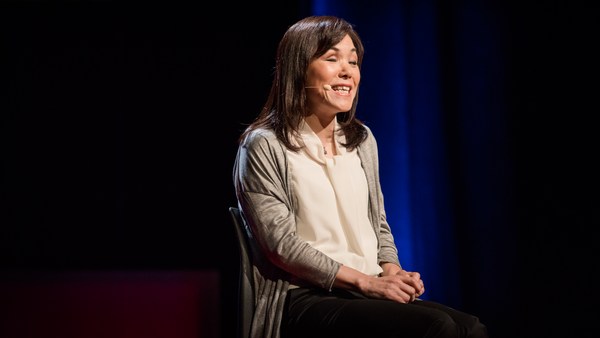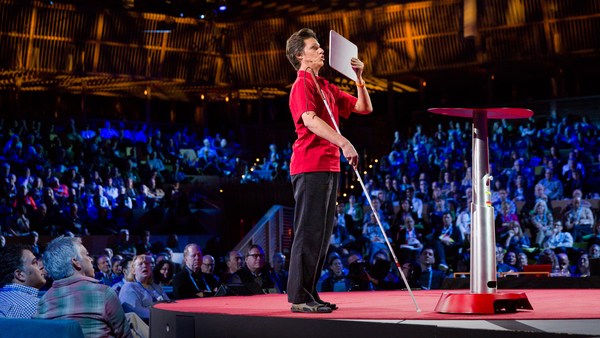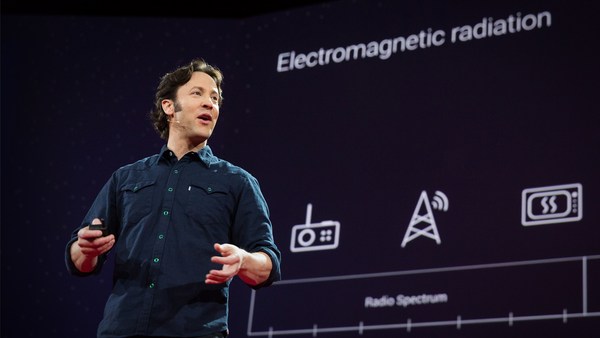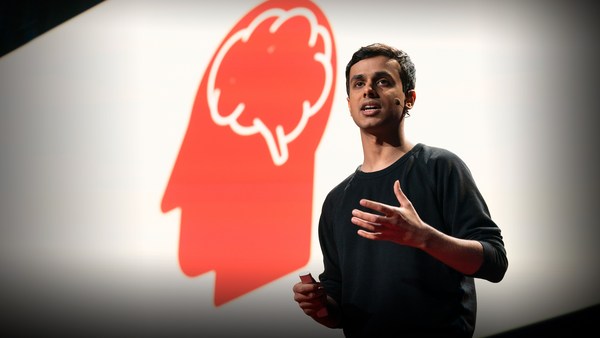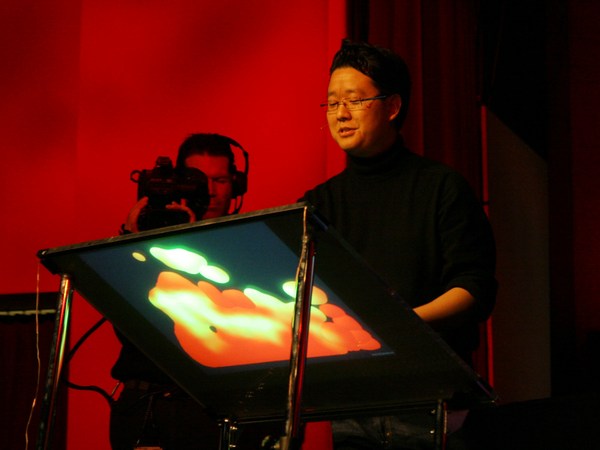Do you remember your first kiss? Or that time you burned the roof of your mouth on a hot slice of pizza? What about playing tag or duck, duck, goose as a child? These are all instances where we're using touch to understand something. And it's the basis of haptic design.
"Haptic" means of or relating to the sense of touch. And we've all been using that our entire lives. I was working on my computer when my friend, seeing me hunched over typing, walked over behind me. She put her left thumb into the left side of my lower back, while reaching her right index finger around to the front of my right shoulder. Instinctively, I sat up straight. In one quick and gentle gesture, she had communicated how to improve my posture. The paper I was working on at that very moment centered around developing new ways to teach movement using technology. I wanted to create a suit that could teach a person kung fu.
(Laughter)
But I had no idea how to communicate movement without an instructor being in the room. And in that moment, it became crystal clear: touch. If I had vibrating motors where she had placed each of her fingers, paired with motion-capture data of my current and optimal posture, I could simulate the entire experience without an instructor needing to be in the room. But there was still one important part of the puzzle that was missing. If I want you to raise your wrist two inches off of your lap, using vibration, how do I tell you to do that? Do I put a motor at the top of your wrist, so you know to lift up? Or do I put one at the bottom of your wrist, so it feels like you're being pushed up? There were no readily available answers because there was no commonly agreed-upon haptic language to communicate information with.
So my cofounders and I set out to create that language. And the first device we built was not a kung fu suit.
(Laughter)
But in a way, it was even more impressive because of its simplicity and usefulness. We started with the use case of navigation, which is a simplified form of movement. We then created Wayband, a wrist-wearable device that could orient a user toward a destination, using vibrating cues. We would ask people to spin around and to stop in a way that they felt was the right way to go. Informally, we tried this with hundreds of people, and most could figure it out within about 15 seconds. It was that intuitive.
Initially, we were just trying to get people out of their phones and back into the real world. But the more we experimented, the more we realized that those who stood to benefit most from our work were people who had little or no sight. When we first approached a blind organization, they told us, "Don't build a blind device. Build a device that everyone can use but that's optimized for the blind experience." We created our company WearWorks with three guiding principles: make cool stuff, create the greatest impact we can in our lifetimes and reimagine an entire world designed for touch.
And on November 5, 2017, Wayband helped a person who was blind run the first 15 miles of the New York City Marathon without any sighted assistance.
(Applause)
It didn't get him through the entire race due to the heavy rain, but that didn't matter.
(Laughter)
We had proved the point: that it was possible to navigate a complex route using only touch.
So, why touch? The skin has an innate sensitivity akin to the eyes' ability to recognize millions of colors or the ears' ability to recognize complex pitch and tone. Yet, as a communications channel, it's been largely relegated to Morse code-like cell phone notifications. If you were to suddenly receive a kiss or a punch, your reaction would be instinctive and immediate. Meanwhile, your brain would be playing catch-up on the back end to understand the details of what just occurred. And compared to instincts, conscious thought is pretty slow. But it's a lightning bolt compared to the snail's pace of language acquisition. I spent a considerable amount of time learning Spanish, Japanese, German and currently Swedish, with varying degrees of failure.
(Laughter)
But within those failures were kernels of how different languages are organized. That gave our team insight into how to use the linguistic order of well-established languages as inspiration for an entirely new haptic language, one based purely on touch. It also showed us when using language mechanics wasn't the best way to deliver information. In the same way a smile is a smile across every culture, what if there was some underlying mechanism of touch that transcended linguistic and cultural boundaries? A universal language, of sorts.
You see, I could give you buzz-buzz-buzz, buzz-buzz, and you would eventually learn that that particular vibration means "stop." But as haptic designers, we challenged ourselves. What would it be like to design "stop?" Well, based on context, most of us have the experience of being in a vehicle and having that vehicle stop suddenly, along with our body's reaction to it. So if I wanted you to stop, I could send you a vibration pattern, sure. Or, I could design a haptic experience that just made stopping feel like it was the right thing to do. And that takes more than an arbitrary assignment of haptic cues to meanings. It takes a deep empathy. It also takes the ability to distill human experience into meaningful insights and then into haptic gestures and products.
Haptic design is going to expand the human ability to sense and respond to our environments, both physical and virtual. There's a new frontier: touch. And it has the power to change how we all see the world around us.
Thank you.
(Applause)
